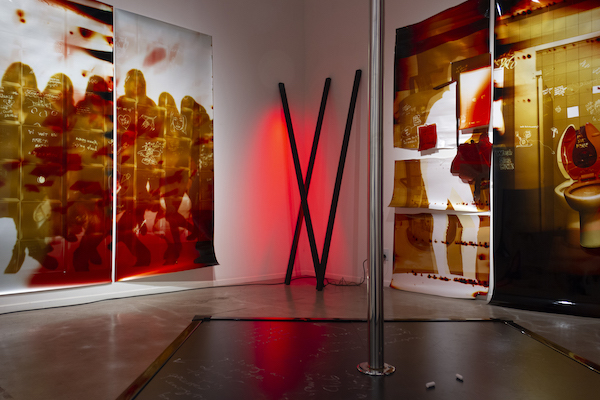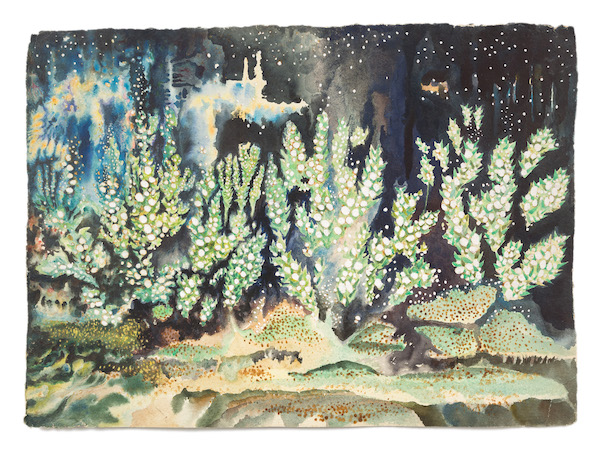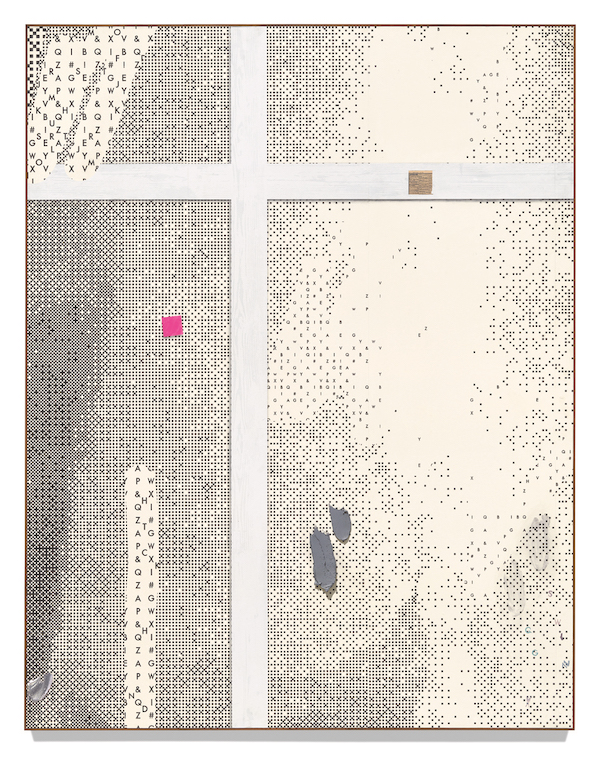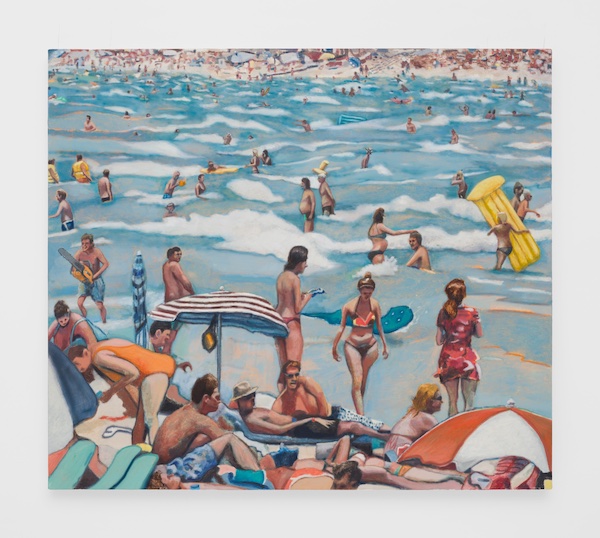The LA art world has seen an exceptional year. Even as big-name artists and galleries prevail amid the booming market, previously unrecognized artists are being shown more widely than ever; and sociopolitical issues are driving much of the critical discourse. Of the many 2019 shows I visited, the following remain etched most sharply in my mind. (This list does not reflect any ranking order.)

Farrah Karapetian, Collective Memory at Von Lintel Gallery, installation view, courtesy of Von Lintel Gallery.
Farrah Karapetian, “Collective Memory”
Von Lintel Gallery
Karapetian based this immersive installation on gallerist Tarrah von Lintel’s fond personal anecdotes about Club Shine, a transgender nightclub that closed in 2017. Frequent patrons’ memories took on intriguing new lives inside the gallery, which transported visitors to a mysterious realm asserting the presence of the transgender community. Awash in otherworldly red light, photograms and interactive sculptural elements evoked haunting dreams of nightlife past.

Sara Kathryn Arledge, Stellar Garden, 1956, courtesy Armory Center for the Arts.
“Sara Kathryn Arledge: Serene for the Moment”
Armory Center for the Arts
Featuring over 60 works on paper and seven films, this retrospective disclosed the forgotten brilliance of Arledge (1911–98), who transcended personal tribulations to create a substantial body of avant-garde work marked by visual ingenuity and conceptual refusal to settle into prescriptive molds.

Kirsten Everberg, Refugio, 2019, photo by Marten Elder, courtesy of 1301PE.
Kirsten Everberg, “Life Still”
1301PE
Painted in seductively shiny enamel, Everberg’s scenes were suffused with artifice and unease; her most impressive tableaux featured factitious spaces populated by incompatible creatures of disproportionate relative sizes.

Foreground: Mitsunori Tokusawa, Sea Spray Breaking on Rock, Karatsu ware, Background: photograph by Taijiro Ito, courtesy Japan House Los Angeles.
“KESHIKI: The Landscape Within”
Japan House Gallery
Translating literally to “landscape,” keshiki is a Japanese aesthetic concept that poetically refers to pottery surfaces’ unique topographies: just as one might perceive scenic landscape features, one can appreciate the textures, colors, and surface configurations on a ceramic artwork. The 63 pieces in this group show made a strong argument for contemporary Japanese pottery’s exquisite natural evocations. Functional vessels’ sculptural structures and painterly surfaces conjured rocky caverns, steep embankments, dusky shorelines, distant mountains and melting snow in streams.

Tala Madani, Shit Mom (Quads), 2019, courtesy David Kordansky Gallery.
Tala Madani, “Shit Moms”
David Kordansky Gallery
With characteristically incisive humor, Madani’s panoply of paintings and animations centered on a new series featuring scatological anti-heroines and their imps as metaphors for humanity’s innate baseness and vulnerability.

Graciela Iturbide, “Mexico…I want to get to know you!”, Chiapas, Mexico, 1975, courtesy of ROSEGALLERY.
Graciela Iturbide, “Hay Tiempo”
ROSEGALLERY
Sparkling with sharp tonality and subtle verve, Iturbide’s photographs confer an iconic, spiritual quality upon quotidian moments. The dozens displayed here spotlighted an array of intriguing subjects in various parts of Mexico, including beekeepers, street vendors, barflies, brides and Zapotec matriarchs.

Laura Owens, Untitled, 2016, courtesy of MOCA and Laura Owens.
Laura Owens
Geffen Contemporary at MOCA
Featuring about 60 paintings from the mid-1990s to the present, this engaging mid-career retrospective manifested the playful eclecticism and technical rigor of Owens’ oeuvre.

Christina Quarles, Bless tha Nightn’gale, 2019, courtesy Regen Projects, Los Angeles.
Christina Quarles, “But I Woke Jus’ Tha Same”
Regen Projects
Recalling Francis Bacon with a more hopeful, feminine twist, Quarles strips figures to their essence, exposing aspects of the human condition in the raw. Divergent brushstrokes, lines and textures danced in variegated harmony against bare canvas in her large-scale portrayals of gymnastically contorted figures engaged in carnal activities of indefinite nature.

George Condo, Billy the Kid, 2018–19, courtesy of the artist, Skarstedt and Sprüth Magers, photography by John Berens.
George Condo, “What’s the Point?”
Sprüth Magers Los Angeles
Rather than growing stale, Condo’s depictions of mixed-up monsters only seem to increase in relevance as reality becomes ever more absurd, grotesque and cartoonish.

Rob Thom, Reverse Beach, 2019, courtesy M+B.
Rob Thom, “The Beast”
M+B
Like funhouse mirrors tilted towards pleasure-seeking crowds, Thom’s paintings magnified follies and foibles extending to American culture at large. His works in this show depicted mostly white middle-class throngs at leisure in such typical venues as zoos, carnivals and wrestling matches. Each scene appeared ordinary enough until you noticed comical distortions and incongruities slyly embedded in plain sight, such as a wading beachgoer wielding a chainsaw with lunatic mirth.
For other notable shows, see my online Pick of the Week column, archived here: artillerymag.com/pick-of-the-week/. It will be interesting to see what 2020 brings; I expect themes of social-mindedness to intensify as sales mania subsides.

